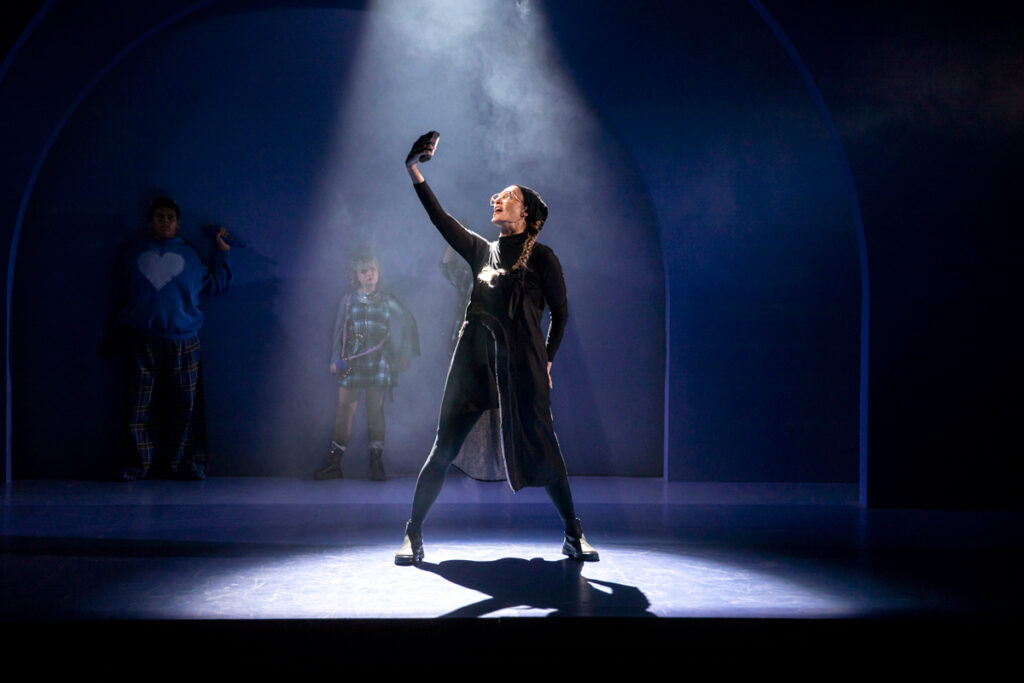2006 Photo of Britney Spears, Paris Hilton, and Lindsay Lohan Inspires a 2025 Off-Broadway Musical
Despite its mostly playful tone, ‘The Last Bimbo of the Apocalypse’ carries a surprisingly sobering message. Take a young person if you can, and be ready to discuss.

Who would have thought that a 2006 snapshot of Britney Spears, Paris Hilton, and Lindsay Lohan would inspire a new musical nearly 20 years later? True, Broadway has capitalized on millennial nostalgia in recent years, with jukebox affairs like “Once Upon a One More Time” and the inexplicably enduring “& Juliet,” but an off-Broadway entry titled “The Last Bimbo of the Apocalypse” carries the practice to a new level — and into a new era.
Titled after the characteristically evocative label the New York Post assigned to an article showcasing that photo, “3 bimbos of the Apocalypse,” the new musical boasts an original score — by Michael Breslin, who co-wrote the book with a frequent collaborator, Patrick Foley, who provided additional music and lyrics — and a highly contemporary and imaginative storyline.
The focus is on three members of Generation Z who become obsessed with the photo, and with solving a mystery: the identity of a fourth woman they believe is in the photo. Milly Shapiro, best known for playing a peculiar girl whose grisly death sets off a chain of supernatural events in the 2018 film “Hereditary,” is cast as one of the teenage sleuths, Brainworm, who’s also an outsider — though not the kind you generally meet in horror movies.
Like the musical’s other teens, Earworm and Bookworm — and like many of their peers in the real world, though usually to a lesser extent — Brainworm, who first introduces herself as “She/Her/Sherlock,” essentially lives online. She has her own channel, but her substantial pool of followers can’t really see her; since receiving a vicious comment at a tender age, she has used a social media filter to obscure her facial features.

Earworm and Bookworm, who broadcast together from different states, are rather less self-conscious; mind you, they have virtually no fans to insult them. Earworm is the more extroverted: Portrayed by a perky Luke Islam, he dresses androgynously and declares that, back in 2006, “Gay guys were allowed to speculate on the inner and outer lives of America’s most famous women.” Bookworm, sweetly played by Patrick Nathan Falk, points out he isn’t gay, as he will on several occasions, though he and Earworm obviously have crushes on one another.
After the three amateur detectives team up, we meet the fictional missing woman, named Coco, back in that era that Earworm recalls so fondly. Described in the script as “a One Hit Wannabe,” and brought to vivid life by a flame-haired, siren-voiced Keri René Fuller, Coco announces that her one dream in life is for her homemade YouTube video “to go NUMBER ONE on Total Request Live,” a hit MTV series during the late ’90s and early aughts.
The worms initially conclude that Coco was murdered, and “Last Bimbo” — under the giddy direction of Rory Pelsue, who helped develop the musical — becomes a wild chase, fueled by musical numbers with driving rock and dance music textures that evoke the recent past as well as the present. Scenes featuring Coco dancing in Cole McCarty’s delightfully chintzy costumes segue into others that unfold in the digital world, where the teens can hide by uttering three simple words: “Let’s go private.”
There’s a method behind this chaos: The unforgiving voyeurism that most of us are subject to these days, thanks to advances in technology and our own vanity, has roots in the celebrity culture that made superstars of Ms. Hilton, Ms. Lohan, and Ms. Spears — and then inevitably helped drag them down, so that both fans and those who had always mocked the young women could all revel in schadenfreude.
Coco, having never reached the heights enjoyed by these real-life idols, can’t descend to such depths of public humiliation. But she endures her own considerable trials, stemming in part from a domineering mother who is made credibly shrill by Sara Gettelfinger, a Broadway veteran who’s also as lithe and leggy as Ms. Fuller.
For all their differences, Coco and Brainworm share something essential: an unhealthy concern about public perception, fostered in no small part by media influences. “You’re a missing girl too,” the young woman desperately seeking fame tells the young woman who’s afraid to show her face, or leave her room, in a rare moment when Coco comes across as wiser and more substantial.
By the end, Brainworm has re-emerged as the cleverer of the two, but everyone has learned something. Audiences will have much to reflect on as well; despite its mostly playful tone, in fact, “The Last Bimbo of the Apocalypse” carries a surprisingly sobering message. Take a young person if you can, and be ready to discuss.

